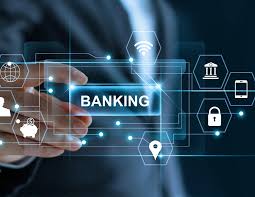Digital Banking Trends: How Fintech Is Shaping the Future of Finance
The rise of fintech (financial technology) is transforming the banking industry, providing consumers with more efficient, accessible, and innovative financial services. Digital banking is no longer just a convenience—it’s a revolution in how we manage money, access credit, and make payments. Let’s explore the key trends driving the growth of digital banking and fintech.
1. The Shift to Mobile-First Banking
Mobile banking has become the norm for many consumers, offering a convenient way to manage finances on the go. Today’s digital banks and fintech apps prioritize mobile-first designs, allowing users to perform all banking functions through their smartphones. With mobile banking, users can transfer money, deposit checks, pay bills, and even invest—all from the palm of their hand.
As mobile banking apps continue to evolve, we can expect even more sophisticated features, such as biometric authentication (face or fingerprint recognition) and AI-powered financial advice, to improve the user experience.
2. The Rise of Neobanks
Neobanks, or digital-only banks, are disrupting the traditional banking model. These banks operate entirely online, without the need for physical branches, and offer services such as checking and savings accounts, loans, and credit cards. Because they don’t have the overhead costs associated with maintaining physical branches, neobanks are often able to offer lower fees, higher interest rates, and better customer service.
Neobanks such as Chime, Monzo, and Revolut are gaining popularity by providing a user-friendly, mobile-first banking experience. They often appeal to younger, tech-savvy consumers who prefer the convenience of digital banking over traditional brick-and-mortar banks.
3. Open Banking and API Integration
Open banking is a key trend that allows third-party financial service providers to access consumer banking data (with their permission) to create innovative products and services. By utilizing APIs (application programming interfaces), open banking enables consumers to connect their bank accounts to fintech apps, budgeting tools, investment platforms, and other financial services.
Open banking is transforming the banking ecosystem, fostering greater competition, transparency, and personalization in the financial services industry. As more banks and fintech companies adopt open banking principles, consumers will have access to more innovative tools to manage their finances.
4. The Growth of Cryptocurrency and Blockchain in Banking
Cryptocurrency and blockchain technology are also making waves in the banking sector. Cryptocurrencies like Bitcoin and Ethereum offer decentralized, secure methods of transferring money across borders, without relying on traditional banks or payment processors. Blockchain technology, which underpins these digital currencies, is also being explored by banks to improve transparency, security, and efficiency in financial transactions.
Some banks are already experimenting with blockchain for cross-border payments, while others are launching their own digital currencies. The rise of cryptocurrencies could lead to a major shift in how money is transferred and stored in the future.
5. Conclusion: The Future of Digital Banking
Digital banking is rapidly evolving, driven by fintech innovation, mobile technology, and the demand for more convenient, personalized services. As these trends continue to reshape the banking landscape, consumers will benefit from more efficient, accessible, and secure financial services. The future of banking will be digital, customer-focused, and constantly evolving to meet the needs of a tech-savvy world.

